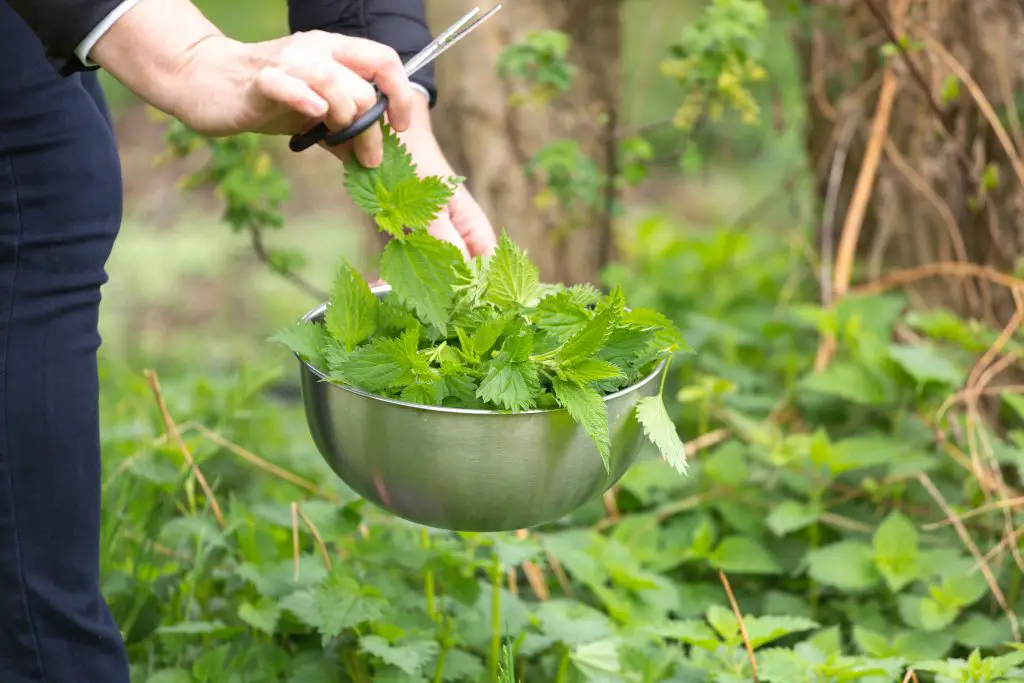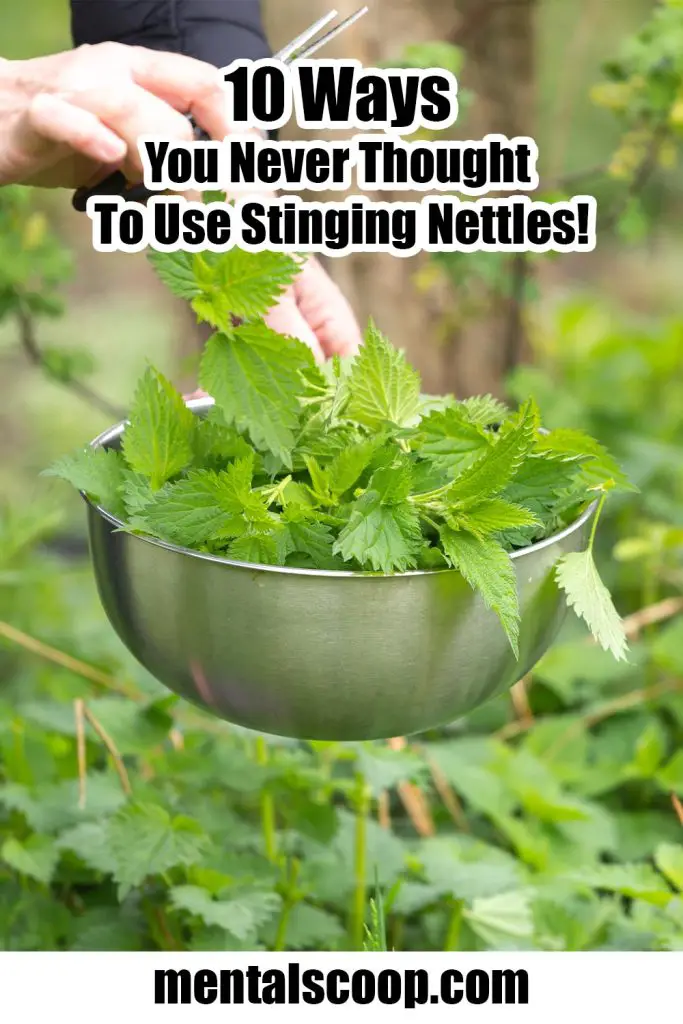
Stinging nettles (Urtica dioica) are infamous for their stinging hairs that cause a painful rash when touched. However, these ubiquitous weeds have been used for various unconventional purposes throughout history, thanks to their numerous beneficial properties.
From natural dye and culinary ingredient to homemade hair tonic and wildlife habitat, stinging nettles offer a wide range of surprising uses beyond their sting. In this article, we will explore 10 creative and practical ways to utilize stinging nettles that you may have never thought of.
Natural Dye:
Stinging nettles can be used to create a beautiful and eco-friendly natural dye. The leaves of the nettle plant contain chlorophyll, which imparts a vibrant green color when extracted. To make nettle dye, gather a bunch of fresh nettle leaves and stems, and boil them in water for about an hour.
Then strain the liquid and use it to dye fabric, yarn, or other materials. You can experiment with different concentrations and techniques to achieve different shades of green.
Nettle dye is not only a sustainable alternative to synthetic dyes, but it also produces unique and earthy hues that are highly sought after by eco-conscious artisans.
Nutritious Tea
Stinging nettle leaves can be used to brew a highly nutritious tea that is rich in vitamins, minerals, and antioxidants. Nettle tea has been used for centuries as a traditional remedy for various ailments due to its potential health benefits.
It is believed to have anti-inflammatory properties, promote healthy digestion, and boost the immune system. To make nettle tea, steep fresh or dried nettle leaves in hot water for about 5-10 minutes, then strain and enjoy.
You can add honey, lemon, or other herbs to enhance the flavor. Nettle tea is a natural and invigorating beverage that can be enjoyed both hot and cold.
Nettle Pest Repellent
Believe it or not, stinging nettles can also be used as a natural pest repellent in your garden. Nettles contain compounds that are toxic to many common garden pests, such as aphids, slugs, and snails.
Simply chop up fresh nettles, including the stems and leaves, and place them around your plants or create a nettle barrier to deter pests. The stinging hairs on the nettles act as a deterrent, preventing pests from feeding on your precious plants.
As nettles are a common weed, you can easily find them in many gardens or natural areas, making them a readily available and free solution for organic pest control.
Nettle Fertilizer
Nettles are rich in nitrogen, an essential nutrient for plant growth, making them an excellent natural fertilizer. You can make nettle fertilizer by creating a nettle steeping solution. To do this, simply fill a container with water and add a bunch of fresh nettle leaves and stems.
Let the mixture steep for a few weeks, stirring occasionally. The fermentation process will break down the nettles and release the nutrients into the water, creating a nutrient-rich liquid fertilizer.
Once the steeping process is complete, strain the liquid and dilute it with water to use as a fertilizer for your plants. Nettle fertilizer is a cost-effective and sustainable way to provide essential nutrients to your plants, promoting healthy growth and development.
Homemade Nettle Hair Tonic
Nettles are believed to have beneficial properties for hair health and can be used to make a homemade hair tonic. Nettle leaves are rich in vitamins and minerals that nourish the scalp and promote hair growth.
To make a nettle hair tonic, steep fresh or dried nettle leaves in hot water for about 30 minutes, then strain the liquid and let it cool. You can add essential oils, such as rosemary or lavender, for added benefits and a pleasant scent.
Once the nettle hair tonic is cooled, apply it to your scalp and hair, massaging gently. Leave it on for 15-20 minutes, then rinse thoroughly. Regular use of nettle hair tonic can help strengthen the hair, reduce dandruff, and promote a healthy scalp.
Nettle Compost Activator
Nettles can also be used as a compost activator, speeding up the decomposition process and enriching the compost with valuable nutrients. Nettles are rich in nitrogen and other essential nutrients, which can help accelerate the breakdown of organic matter in the compost pile.
Simply chop up fresh nettle leaves and stems and add them to your compost pile, layering them with other organic materials. The nettle leaves will provide a boost of nitrogen to the compost, helping to create nutrient-rich soil for your plants.
It’s important to wear gloves and handle the nettles carefully to avoid getting stung during the process.
Nettle Soup or Pesto
Stinging nettles can also be used as a culinary ingredient, adding a unique and nutritious twist to your meals. Nettle leaves can be cooked and used in soups, stews, or even made into a delicious pesto.
To use nettles in cooking, first blanch the leaves in boiling water for a few minutes to remove the stinging hairs. Then drain and rinse them, and they are ready to be used in your favorite recipes.
Nettle leaves have a rich, earthy flavor that can add depth to soups and sauces, and they are packed with vitamins and minerals, making them a healthy addition to your meals.
Nettle Fiber for Cordage or Textiles
Nettle fibers have been used for thousands of years to make cordage, textiles, and even clothing. Nettle fibers are strong, durable, and flexible, making them suitable for various applications.
To extract nettle fibers, first, harvest the stems of the nettle plant when they are at their peak, usually in the spring or early summer. Strip off the leaves, and then scrape the outer bark to reveal the inner fibers.
These fibers can be used to make cordage for crafts, such as bracelets or nets, or spun into yarn to make textiles. Nettle fibers are a sustainable and eco-friendly alternative to synthetic fibers, and they have a long history of use in traditional textiles.
Nettle Wildlife Habitat
Stinging nettles can also serve as a valuable wildlife habitat in your garden or natural area. Nettles provide food and shelter for many beneficial insects, such as butterflies, moths, and bees, as well as other wildlife like birds and small mammals.
The nettle leaves are a food source for the caterpillars of various butterfly and moth species, while the tall stems and dense foliage provide shelter and nesting sites for birds and small animals.
By allowing some patches of nettles to grow undisturbed in your garden, you can create a thriving habitat for wildlife and promote biodiversity.
Nettle Medicine
Nettles have a long history of use in traditional medicine for their potential health benefits. Nettle extracts, supplements, and teas are used for various purposes, such as reducing inflammation, relieving allergies, and supporting urinary tract health.
Nettles are believed to have diuretic, anti-inflammatory, and antioxidant properties, among others, that may contribute to their medicinal properties.
However, it’s important to consult with a qualified healthcare professional before using nettles for medicinal purposes, as they may interact with certain medications or cause adverse reactions in some individuals.
Overall
Stinging nettles are more than just a common weed with stinging hairs; they are a versatile and beneficial plant that can be used in various ways.
From culinary uses to medicinal properties, gardening benefits to crafting materials, nettles offer a wide range of practical applications that make them a valuable addition to any garden or natural area.
Nettles are packed with essential nutrients, including vitamins, minerals, and antioxidants, making them a nutrient-rich addition to your diet. They can be used in recipes such as soups, stews, pesto, or even brewed into tea.
Nettles are also known for their potential health benefits, including anti-inflammatory properties that may help with allergies, urinary tract health, and overall well-being.
However, it’s important to consult with a healthcare professional before using nettles for medicinal purposes, as they may interact with certain medications or cause adverse reactions in some individuals.
In addition to their culinary and medicinal uses, nettles also offer numerous benefits for gardening and sustainability. Nettle teas and tonics can be used as natural fertilizers, insecticides, and pest repellents in the garden, promoting healthy plant growth and deterring harmful pests.
Nettle compost activators can speed up the decomposition process, enriching the compost with valuable nutrients. Nettle fibers can be used for cordage, textiles, and crafts, providing a sustainable and eco-friendly alternative to synthetic fibers.
And by allowing patches of nettles to grow undisturbed in your garden, you can create a thriving wildlife habitat, supporting beneficial insects, birds, and small mammals, and promoting biodiversity.
Despite their stinging hairs, nettles are a resilient plant that can thrive in various environments, making them an easy and low-maintenance addition to your garden or natural area.
They can be found in many parts of the world and are often considered invasive or nuisance weeds. However, with proper management and utilization, nettles can be turned into a valuable and beneficial resource.

More interesting articles you may be interested in reading:

Potato Grow Bags: The Key to a Convenient, Pest-free, and Bountiful Harvest
Fluffy Miniature Cows Are SO CUTE and They Make GREAT PETS.
20 Ways to Deter Rabbits from Eating Your Garden
How To Get Rid Of Wasps With Just A Brown Paper Bag
How To Get Rid Of Any Burrowing Animals With This Dawn Soap Solution
Thanks for reading and be sure to share this info with your friends using the social share buttons below.
Talking about social stuff, consider liking our Facebook page to keep up to date with our articles. Check out our other articles for more mental scoops!
